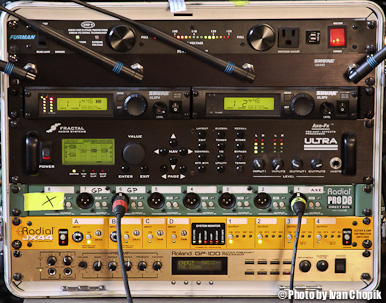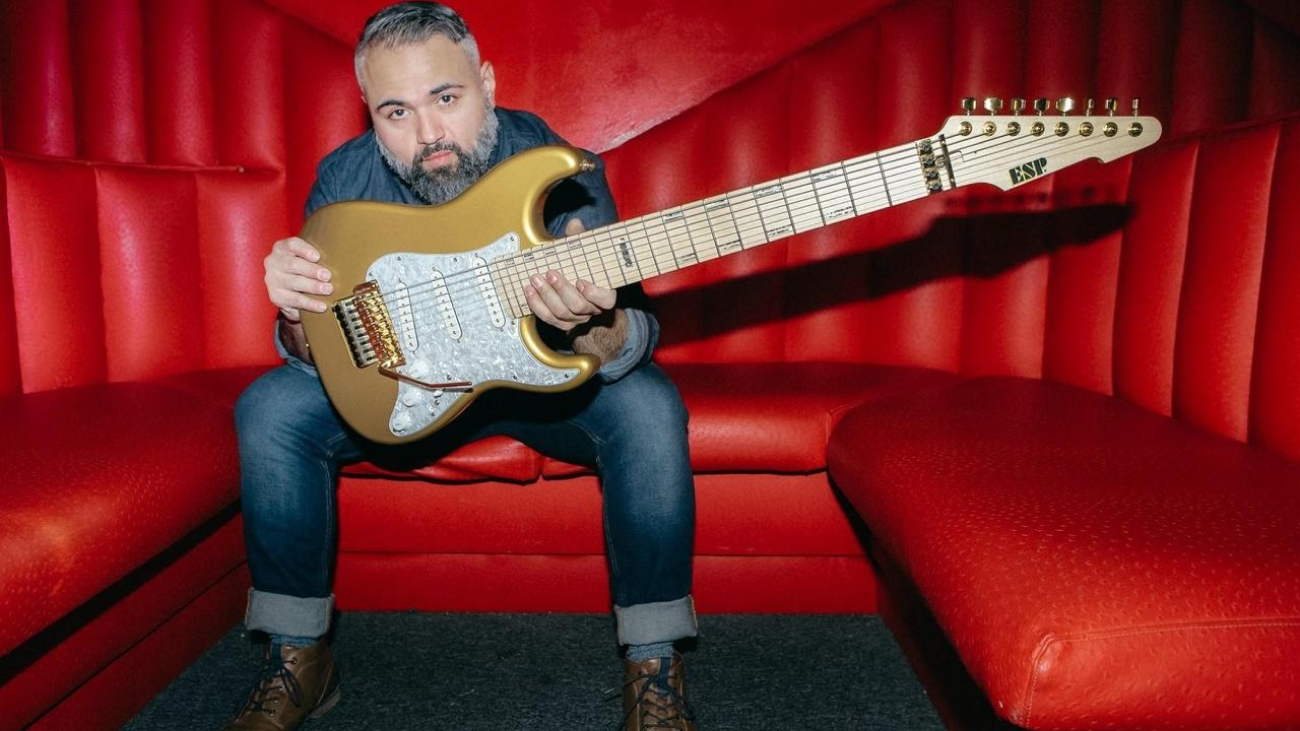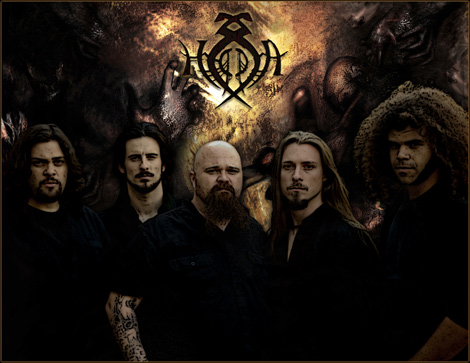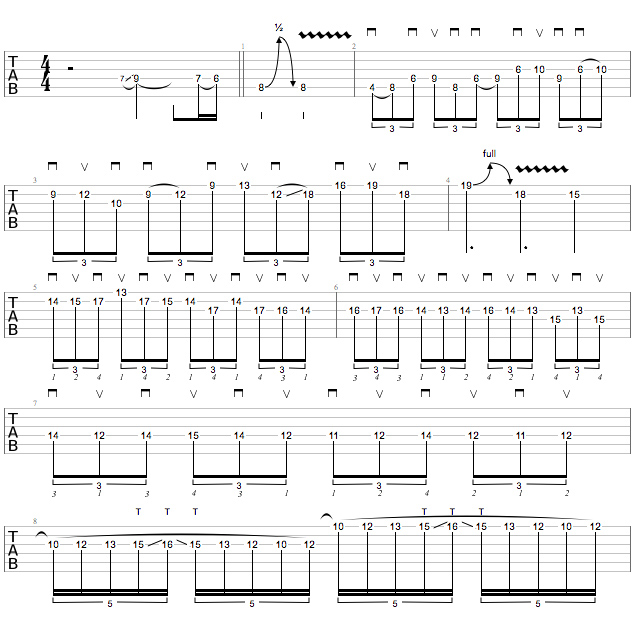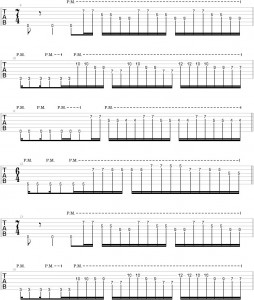Guitars & Rig
Guitars make or break songs. I firmly advocate that while certain guitars have a ton of songs in them, certain guitars have zero in them. If a guitar inspires you to play, you are going to write things according to the attributes of that specific guitar. For example, I got this guitar the other day and I’ve written a bunch of sort of poppy riffs on it. Every time I pick up the guitar I’m writing those sort of riffs. I got another guitar the other day that makes me want to write melodies or bluesy sort of sounds. I got this Flying V that makes me write very heavy things.
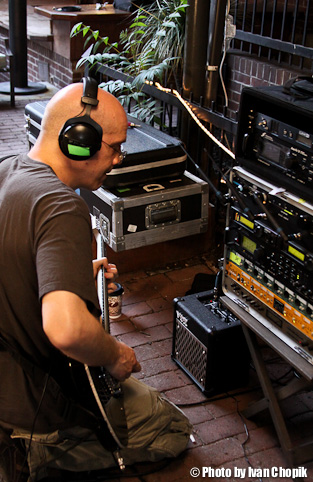
For years I used a ton of different amps. I used Mesa Boogie for years; I loved their stuff. I used a [Peavey] 5150, a Budda, a Marshall, a Crate, a Gorilla…, but then I bought a [Line 6] POD years back and I thought it was cool to have a bunch of fake sounding, but sort of synthetically cool guitar amps.
Then all of a sudden I went in with Fractal and I used their product, the Axe-Fx, and there’s nothing else I need. It’s as simple as that. Live, I run it direct to the board, studio I run it direct to the board. It took me a year to get a sound I was satisfied with. I just received the Axe Fx II and it’ll probably take me another year to get to the point where I’m 100% satisfied with that, but it’s the end of the rainbow for me. In a lot of ways it’s disappointing because I used to like going on Harmony-Central.com and looking up tons of vintage, old stupid amps.
I run a rack that’s got two wirelesses that I select between with a Radial JX44 which distributes my signal to two Fractal Axe-Fx so I can auto-switch if one of them goes down, which has yet to happen. I use a Roland unit, the GP-100. I’ve used that for my whole career and I run that simultaneously for my effects. I’ve managed to replicate that in the Fractal, but it’s an intangible thing that that old Roland has that I really like.
For clean sounds I use the Axe-Fx. I use sort of a Fender Bassman sound because I like that clean sound with a bit of breakup. I use all the effects in the Axe-Fx with the Fractal pedal board for my miles of reverb and delay. I use a Shure wireless system and a bunch of Radial gear because they’ve got amazing quality.
As Armando, my buddy and tech, will profess, my sweat is disgusting. I’ve got a viscous, sort of oily emission that comes out of my body that erodes and destroys anything that it touches. It’s absolutely revolting and I’m quite proud of it, so my gear goes through a lot of abuse. For me, the things that are wimpy in my life and can’t handle abuse don’t last, whether it be people or my own personality deficiencies, or gear. By abuse I don’t mean sadistic, purposeful I’m-going-to-try-and-destroy-my-gear-and-my-friendships abuse. I’m just talking about how if you can’t take being on tour, if you can’t take getting disgusting sweat all over you, if you can’t take a drop off the back of the bus, it’s not going to last.
I’ve had these very expensive guitars that were beautiful that I had to handle with kid gloves and then I just never end up using them, because they just don’t take the abuse. These guitars take the abuse and the Fractal Axe-Fx takes the abuse. I’ve been in a relationship with a wonderful person for 20 years and we abuse the shit out of each other just, because life’s hard, right? That is something I look for in gear. If you can take being dragged behind a bus and then get there and still work, we’re okay.
Fractal Audio Axe-FX
[Editor’s Note: The following discussion is based on the Axe-Fx Ultra model. While most of the concepts Devin explains also apply to the Axe-Fx II, some specific settings may vary.]
On the Axe-Fx I’ve got three sounds that I use: I use a high gain, I use a low gain, and I use a clean sound. With the heavy sound, the first thing it goes into is a whammy that has an auto bypass. It’s just a pitch up and down the octave. Then it goes into a wah which is on auto-engage, as well, with a Bad Horsie kind of sound. Then I go into a filter block that basically cuts certain frequencies as you are playing. [http://wiki.fractalaudio.com/index.php?title=Tips_and_tricks – Check out ‘Tightening up the low end’ for more info on this filtering approach.]
From there I go into an 808 drive pedal and I use it exactly the same way as I did with my [Mesa Boogie] Rectifiers live: no gain, volume cranked, tone in the middle, so essentially it’s a clean boost. Then I go into a Recto Orange with 10 o’clock on the gain, the bass at about noon, the mid at about 10, the trouble at 10 or 11, the presence at about 1, and the master is about 10 or 11.
From there I go into two cabs. One of them I made. I took the Red Wires patch and I took the Uber Cab 30 and the Uber Cab 75 and I mixed them online on their mixing site. They’re close mic’ed with a 57 and a 421. In parallel with that I run a German Cab, which is one that came along with the Axe-Fx Ultra. I don’t use a microphone on it so it’s not very heavy in the mix so it just adds a bunch of boost to the lows.
Past that I run two parametric EQ’s and I kind of dip anything below 80. I boost about 3.5, I scoop at about 250, and I add a bunch at 10 or 11. Then on the Global EQ I add a bunch of 60 which is a cool compromise for the things that I cut. I add about 100, I add a bit more of the 10, I add a bit more of the 3. I’ve got a delay patch that I use. It’s like a ping-pong that has about 60% repeat, and that’s it. That’s my rig.
For the low gain sound I use a Soldano through the same cab situation but just almost no gain, no distortion, no delay. For the clean sound I run into a compressor, then into a tweed [amp model], then into the stock tweed cab, then into another compressor, and then into a parametric EQ that I use to do approximately the same boosting and cutting I do with the heavy sound.
That goes into a stereo tape delay and I put a low pass filter to get rid of the click of the delay because with the clean sound I like it to be kind of soupy, like an analog sound. You can achieve that just by going into the EQ of the delay and getting rid of a lot of the high-end. I take a feed from that delay into a reverb so it’s not in line. I access the reverb with a volume block before I so I can send out that however much I want during the performance. Then I run that to the output as well so there in parallel but they don’t affect each other. And that’s my sound, brother!
There’s no smoke and mirrors to it. Because I’ve been working in the studio for so long, I know what sounds like shit, because I’ve made a bunch of records that sound like shit. A lot of times people who haven’t had the experience of playing live may get into an Axe-Fx or a POD and they’ll just scoop all the mids and add a bunch of low-end and high-end, because it sounds great in their bedroom. But when you’re playing with the drummer, the high end gets lost in the cymbals, the low end gets lost in the bass, and before you know it all you’ve got is this nasally sounding midrange thing that’s missing everything else.
So what I do is I get rid of the bass, I get rid of a lot of the highs, and I make my whole frequency range kind of sit in the middle, because that’s where the guitar should sit. Then from there you can do a bit of scooping and boosting, but your guitar should be a lot more mid range than people give it credit for.
[Special Thanks to Chris Thomas and Joe Mahoney for their excellent camera work and Devin Kumar for his fantastic video intro and editing.]



